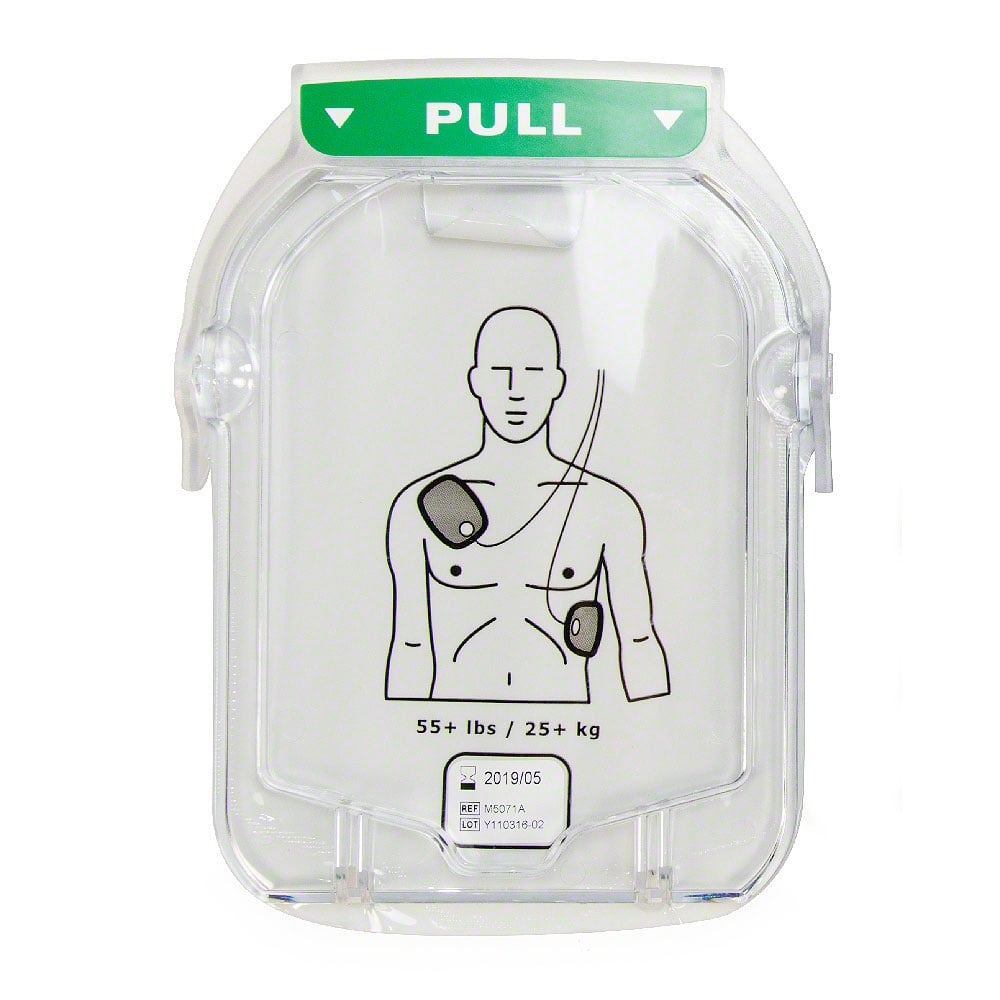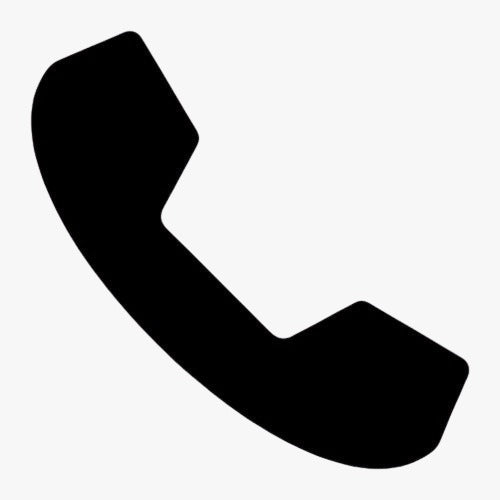Choosing an Automated External Defibrillator (AED) is one of the most important decisions you can make for your home, school, or small business. With this purchase, you’re investing in the power to save a life. In your research, you’ve likely narrowed your options down to two of the most trusted names in the industry the ZOLL AED Plus and the Philips HeartStart OnSite. Both are excellent, FDA-approved devices, but they are designed with different users and situations in mind.
Making this choice can feel overwhelming. You’re worried about getting it wrong, about whether the device will be easy to use under the immense pressure of an emergency. We understand. This guide is designed to cut through the confusion, using data and real world scenarios to help you confidently decide which AED is the right fit for you.
For most homes, small offices, and community spaces with layperson rescuers, the Philips HeartStart OnSite is our top recommendation for its unmatched simplicity and speed of use. For environments with trained responders or those who prioritize the most advanced CPR coaching, the ZOLL AED Plus is an incredibly powerful tool.
A side by side comparison ZOLL vs Philips
Let's start with a clear, scannable overview. While technical specs are important, the real difference lies in how these features translate to a rescue scenario.
|
Feature |
ZOLL AED Plus |
Philips HeartStart OnSite |
|
Ease of Use |
Very user-friendly with pictorials and voice prompts. One-piece pad system simplifies placement. |
Rated highest for ease of use in independent studies. Clear, calm voice instructions guide the user step by step. |
|
CPR Feedback |
Real CPR Help®: Provides real-time audio and visual feedback on the depth and rate of chest compressions. |
Voice prompts guide CPR, but it does not measure compression depth or rate. |
|
Operation |
Semi-automatic (requires user to press a shock button). |
Semi-automatic (requires user to press a shock button). |
|
Initial Cost |
Higher initial purchase price. |
Lower initial purchase price. |
|
Long-Term Cost |
Lower long-term cost due to longer-lasting consumables. |
Higher long-term cost due to more frequent consumable replacement. |
|
Pad Type |
CPR-D-padz® (one-piece design) or Stat-Padz II (two-piece). |
HeartStart SMART Pads (cartridge-based system). |
|
Pad Shelf Life |
5 years. |
2 years. |
|
Battery Life |
5 years. |
4 years. |
|
Warranty |
7 years (with registration). |
8 years. |
|
Product Link |
Ease of use what the data says
In a sudden cardiac arrest, every second counts. The survival rate for an out of hospital cardiac arrest is tragically low, around 10 percent. However, immediate CPR and the use of an AED can double or even triple a person's chance of survival. This is why ease of use isn't just a feature, it's the most critical factor for an AED in a public setting.
An independent usability study published by Stryker put several AEDs to the test with untrained lay users. The results were clear: the Philips HeartStart OnSite consistently enabled untrained rescuers to deliver a shock faster than any other device, including the ZOLL AED Plus. Users rated it as the easiest to use.
What does this mean for you? It means that in a moment of panic, a person with no prior training is more likely to use the Philips OnSite quickly and effectively. Its calm, clear voice prompts the rescuer through every single step, from placing the pads to performing CPR. This simplicity directly addresses the fear of failure, providing reassurance that anyone can step in and be a hero.
CPR feedback a closer look
This is the single biggest difference between the two devices and a key factor in your decision.
The ZOLL AED Plus features its proprietary Real CPR Help technology. When you place the one piece CPR-D-padz on the patient, a sensor measures the rate and depth of your chest compressions. If you’re not pushing hard enough, a voice prompt will tell you to “Push harder.” If you’re doing it right, it will say “Good compressions.” This real time feedback is designed to help you perform high quality CPR, which is vital for keeping blood flowing to the brain and heart.
The Philips HeartStart OnSite, by contrast, provides standard CPR coaching. It will tell you when to start chest compressions and provides a metronome beat to help you maintain the correct pace. However, it does not measure or provide feedback on the depth of your compressions.
The choice comes down to your environment. For trained responders or those in a workplace wellness program who receive regular CPR and AED training, the advanced feedback of the ZOLL can be invaluable. For a typical home or small business, the simplified, guided approach of the Philips OnSite is often more than sufficient and less intimidating for a first time user.
Calculating the true cost of ownership
Your initial purchase is only part of the overall investment. To understand the true cost, you must consider the long term expense of replacement batteries and pads.
The ZOLL AED Plus has a higher upfront cost. However, its consumables last significantly longer. Both the batteries and the CPR-D-padz have a five year shelf life. This means you only need to replace them once over a ten year period.
The Philips HeartStart OnSite is more affordable initially, making it a popular choice for budget conscious buyers. Its battery has a four year life, and the pad cartridge must be replaced every two years. This results in more frequent replacement purchases over the life of the device.
Over a ten year span, the total cost of ownership for both devices tends to even out, but the spending schedule is different. With the ZOLL, you have a larger initial investment and minimal costs for five years. With the Philips, you have a smaller initial purchase followed by smaller, more frequent replacement costs. Our value packages can help bundle everything you need upfront, simplifying the process for either choice.
Which AED is right for your environment
Let’s apply this information to your specific situation.
Best for home use
For most families, the Philips HeartStart OnSite is the ideal choice. Its market leading ease of use ensures that anyone in the home, from a teenager to a grandparent, can use it effectively in an emergency. Its lower upfront cost also makes it one of the more accessible AEDs for home application.
Best for small businesses
We also recommend the Philips HeartStart OnSite for most small businesses. The minimal training required and straightforward operation reduce the burden on your staff. Its simplicity builds confidence, making it more likely that an employee will act decisively when needed. You can find more details in our guide to choosing an AED for your office.
Best for schools and community centers
This can be a toss up. If the budget is tight and the device will be placed for use by the general public or staff with minimal training, the Philips OnSite is a fantastic option. If the school has dedicated first responders like a school nurse or athletic trainers who can leverage the advanced CPR feedback, the ZOLL AED Plus is a powerful contender.
Best for trained responders
For environments with medically trained professionals, EMTs, or dedicated workplace responders, the ZOLL AED Plus often becomes the preferred device. These users can fully utilize the Real CPR Help feedback to maximize the effectiveness of their rescue efforts, making it an exceptional tool in practiced hands.
Making your AED program simple and compliant
Owning an AED comes with the responsibility of ensuring it’s ready to work when called upon. This means performing regular readiness checks and tracking the expiration dates of pads and batteries.
At Response Ready, we make this easy. The free Response Ready App helps you manage your devices across multiple locations, automating monthly check reminders and allowing you to scan your AED to log inspections in seconds. As users on the App Store note, it makes managing your program "so convenient and easy." For a completely hands off solution, our AED program management handles everything from medical oversight to compliance tracking, ensuring your AED is always ready.
Our final recommendation
Choosing between the ZOLL AED Plus and the Philips HeartStart OnSite is about matching the device’s strengths to your specific needs.
You can’t go wrong with either AED. Your decision to place one in your facility is the most important step you can take.
-
If your priority is giving any bystander the best possible chance to act quickly and confidently with a device proven to be the easiest to use, choose the Philips HeartStart OnSite.
-
If your environment includes trained responders or you want to equip users with the most advanced technology for CPR coaching, choose the ZOLL AED Plus.
-
If you have more questions, our team of experts is available via live chat or phone to help you make the perfect choice.
At Response Ready, we've been dedicated to making this technology accessible since 2007, and we’re here to support you every step of the way.
Frequently asked questions
Q: Is one AED truly better than the other?
A: No. Both the ZOLL AED Plus and the Philips HeartStart OnSite are top tier, FDA approved devices that will save lives. "Better" depends entirely on your specific environment, budget, and the likely rescuers. The Philips OnSite is better for untrained bystanders due to its simplicity, while the ZOLL AED Plus is better for those who can leverage its advanced CPR feedback.
Q: Is the ZOLL's Real CPR Help necessary for an untrained user?
A: While helpful, it may not be necessary. The primary goal for an untrained rescuer is to apply the pads and deliver a shock as quickly as possible. The Philips OnSite excels at this. High quality CPR is critical, but some experts argue that the added task of monitoring CPR feedback could slightly delay or complicate the process for a panicked, untrained user.
Q: How hard is it to replace the batteries and pads?
A: It's very simple for both devices. The Philips OnSite uses a cartridge system where the pads are in a single pack that clicks into place. The battery is also a simple pop out, pop in replacement. The ZOLL uses a sleeve of consumer lithium batteries and pads that are easily plugged into the device. We have guides and videos to walk you through the setup of your new AED.
Q: Are both AEDs approved for use on children?
A: Yes, but they handle it differently. The Philips OnSite requires the purchase of a separate infant/child key and pediatric pads. The ZOLL AED Plus requires a separate Pedi-padz II. It’s crucial to have pediatric supplies on hand if your AED will be located in a place with children, such as a school or community center.
Q: What kind of support does Response Ready offer after my purchase?
A: We provide end to end support. Every AED purchase includes free standard shipping, a 30 day money back guarantee, and a one year price promise. Our US based customer service team is available by phone or email to answer any questions, and our Response Ready App and AED program management services help you maintain compliance and readiness for the entire life of your device.






